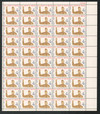
# 1145 - 1960 4c Boy Scouts of America
History Of The Boy Scouts
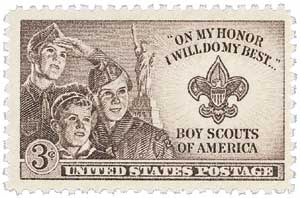
On January 24, 1908, Robert Baden-Powell published the first installment of Scouting for Boys, a pivotal event in the creation of the worldwide Boy Scouts organization.
In the 1880s and 1890s, Lieutenant General of the British Army Robert Baden-Powell was stationed in India and Africa. Much of what he taught his soldiers was based on his fondness of woodcraft and military scouting, which was intended to help them survive in the wilderness. Realizing that the troops needed to be more independent, and not just blindly follow their officer’s orders, Powell wrote, Aids to Scouting.
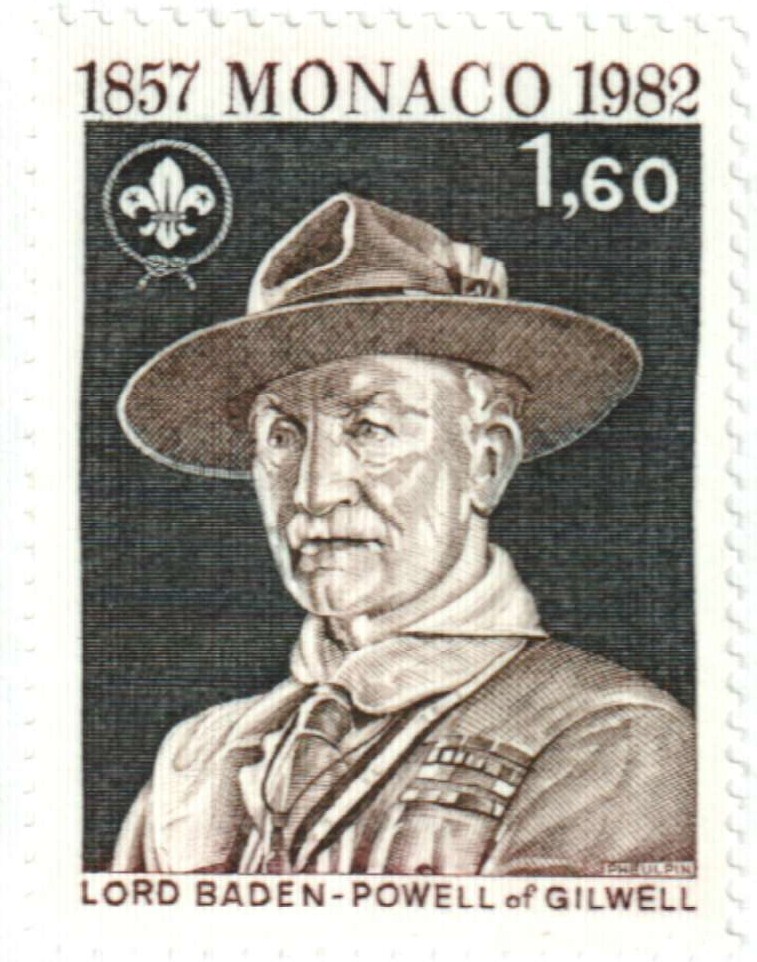
During the siege of Mafeking in South Africa during the Second Boer War, Baden-Powell encountered a group of boys aged 12-15 called the Mafeking Cadets. Given jobs during the siege to free up soldiers for combat, and dressed in military-like khaki uniforms, Cadets worked as lookouts, bicycle messengers, and postmen. They even escorted enemy Boers to jail.
By the time he returned to England, Powell discovered a large number of boys, teachers, and youth organizations were utilizing his book. The Mafeking Cadets also inspired him, and he had an idea for a new youth organization. In 1907, he wrote a book called Boy Patrols and gathered a group of 21 boys to go on a weeklong camping trip to Brownsea Island, England, to test his ideas from the book.
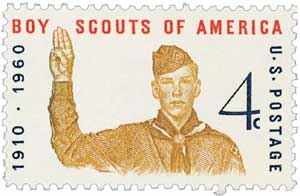
Using many of the lessons learned in South Africa, Baden-Powell taught the boys about woodcraft, camping, exercise, and chivalry – all designed to guide boys into being good citizens. The boys built their own refuge and learned skills necessary to survive in the outdoors.
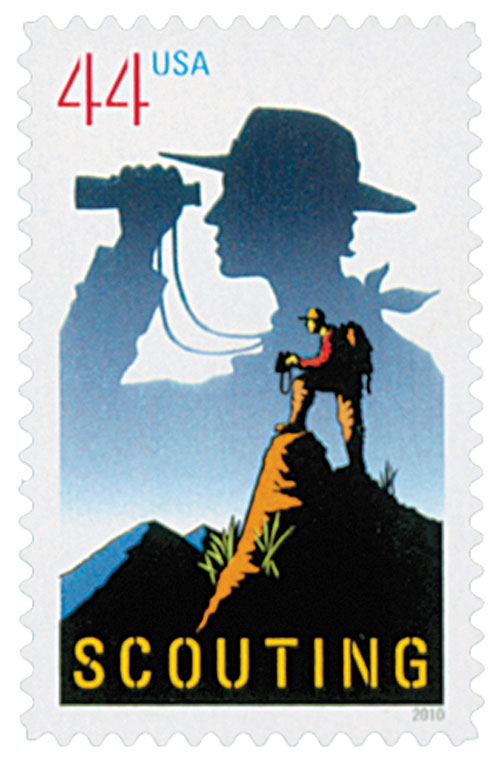
Around the same time, Baden-Powell went on a speaking tour, sharing his ideas and promoting his new book, Scouting for Boys, which was first published on January 24, 1908. The book contained, among other things, the scouting method. The scouting method is what scouting units are based on. It describes scouting as “a voluntary nonpolitical educational movement for young people open to all… in accordance with the purpose, principles, and method conceived by the Founder.”
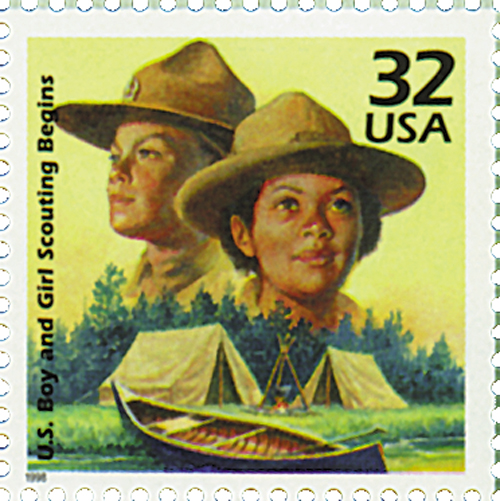
Between the Brownsea camping experience and the book, Scouting was born. Boys began to form Scout patrols, first in England, but then quickly spreading to Gibraltar and Malta. The first Scout rally, held in 1909 at The Crystal Palace in London, welcomed 10,000 boys and a number of girls. Just one year after Scouting for Boys was published, there were 50,000 Scouts in England. Soon, the idea spread across the oceans. The Boy Scouts of America was founded in 1910 and the Girl Guides in 1911.
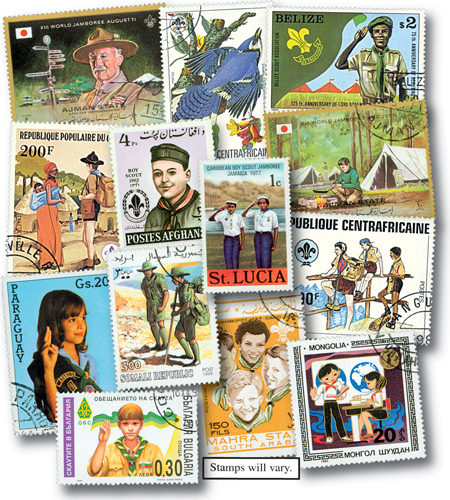
Since those early days on Brownsea Island, the Scouting Movement has grown to include 41 million active Scouts and Guides around the world, from over 200 countries. Scouts gather in weekly meetings and events, where they learn about camping and good citizenship. They advance in rank by earning merit badges, in which they have to demonstrate proficiency in various subjects. Robert Baden-Powell’s idea has turned into one of the most helpful organizations in the world.
British Prime Minister Winston Churchill later named Baden-Powell as one of the “Three most famous generals I have known in my life (but who) won no great battles over the foreign foe.” On Baden-Powell’s gravestone is a tracking sign of a dot inside a circle – it means “Gone home.”
Click here to read Scouting for Boys.
Click here for more scouting stamps.
History Of The Boy Scouts

On January 24, 1908, Robert Baden-Powell published the first installment of Scouting for Boys, a pivotal event in the creation of the worldwide Boy Scouts organization.
In the 1880s and 1890s, Lieutenant General of the British Army Robert Baden-Powell was stationed in India and Africa. Much of what he taught his soldiers was based on his fondness of woodcraft and military scouting, which was intended to help them survive in the wilderness. Realizing that the troops needed to be more independent, and not just blindly follow their officer’s orders, Powell wrote, Aids to Scouting.

During the siege of Mafeking in South Africa during the Second Boer War, Baden-Powell encountered a group of boys aged 12-15 called the Mafeking Cadets. Given jobs during the siege to free up soldiers for combat, and dressed in military-like khaki uniforms, Cadets worked as lookouts, bicycle messengers, and postmen. They even escorted enemy Boers to jail.
By the time he returned to England, Powell discovered a large number of boys, teachers, and youth organizations were utilizing his book. The Mafeking Cadets also inspired him, and he had an idea for a new youth organization. In 1907, he wrote a book called Boy Patrols and gathered a group of 21 boys to go on a weeklong camping trip to Brownsea Island, England, to test his ideas from the book.

Using many of the lessons learned in South Africa, Baden-Powell taught the boys about woodcraft, camping, exercise, and chivalry – all designed to guide boys into being good citizens. The boys built their own refuge and learned skills necessary to survive in the outdoors.

Around the same time, Baden-Powell went on a speaking tour, sharing his ideas and promoting his new book, Scouting for Boys, which was first published on January 24, 1908. The book contained, among other things, the scouting method. The scouting method is what scouting units are based on. It describes scouting as “a voluntary nonpolitical educational movement for young people open to all… in accordance with the purpose, principles, and method conceived by the Founder.”

Between the Brownsea camping experience and the book, Scouting was born. Boys began to form Scout patrols, first in England, but then quickly spreading to Gibraltar and Malta. The first Scout rally, held in 1909 at The Crystal Palace in London, welcomed 10,000 boys and a number of girls. Just one year after Scouting for Boys was published, there were 50,000 Scouts in England. Soon, the idea spread across the oceans. The Boy Scouts of America was founded in 1910 and the Girl Guides in 1911.

Since those early days on Brownsea Island, the Scouting Movement has grown to include 41 million active Scouts and Guides around the world, from over 200 countries. Scouts gather in weekly meetings and events, where they learn about camping and good citizenship. They advance in rank by earning merit badges, in which they have to demonstrate proficiency in various subjects. Robert Baden-Powell’s idea has turned into one of the most helpful organizations in the world.
British Prime Minister Winston Churchill later named Baden-Powell as one of the “Three most famous generals I have known in my life (but who) won no great battles over the foreign foe.” On Baden-Powell’s gravestone is a tracking sign of a dot inside a circle – it means “Gone home.”
Click here to read Scouting for Boys.
Click here for more scouting stamps.






